
Are Owners Complacent in Cupertino?
 |
|
|
Drive down Tantau Avenue towards the 230-plus homes in the Fairgrove Eichler development of Cupertino and you spot ominous signs. You see typical little postwar tract homes on some lots, and on others immense and pretentious hulks where smaller houses once stood.
This is Silicon Valley after all – the Apple campus is only two miles away – so why wouldn’t the compact, 1960-'61-era Eichlers of Cupertino be ripe for tearing down? Or building up, with second stories?
Indeed, as you drive into the tract from Tantau, one of the first homes you spot has grown a good bit taller. But – can it really be three stories?
Teardowns and two-story additions have threatened other towns in Silicon Valley. That’s why you might have expected that a recent Cupertino planning ordinance giving neighborhoods an easier way to protect their single-story character might have found favor in Fairgrove.
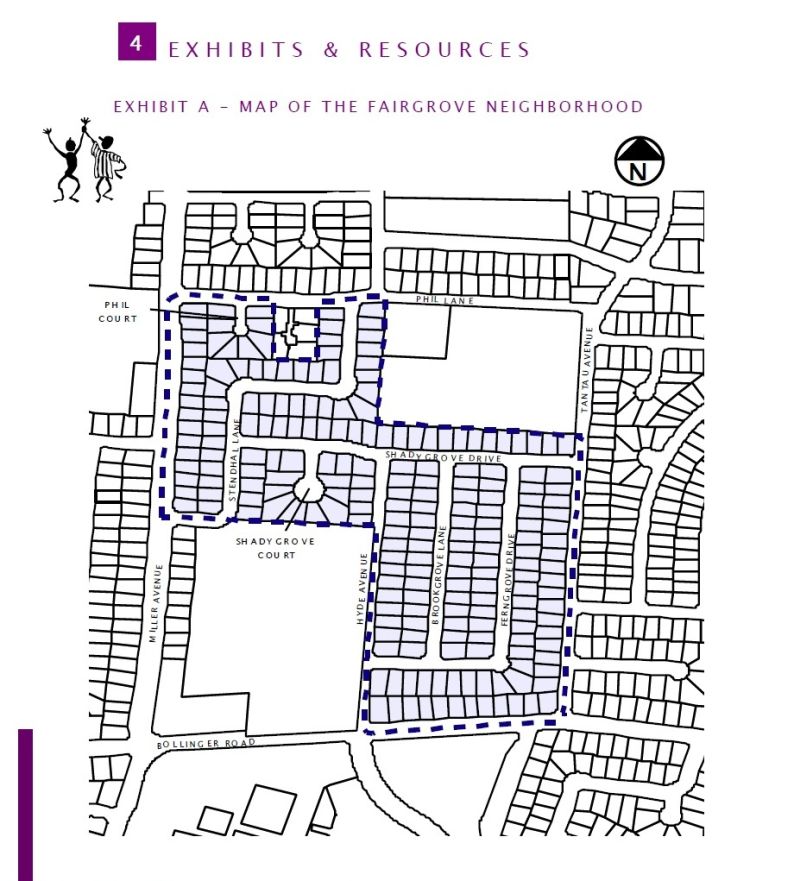 |
|
|
In April 2017, Cupertino’s city council adopted a process by which neighborhoods throughout town could apply for protection against two-story homes and two-story additions. There had been a process before, but this new one was designed to be easier and clearer and fairer.
A transparent process, some thought, would avoid the strife that occurred in nearby Palo Alto. There, arguments broke out in some neighborhoods about the fairness and transparency of the process of winning neighborhood support.
Under the new regime, for a neighborhood in Cupertino to create a single-story overlay zone, at least three-quarters of the homes have to be single story. Two-thirds of the owners must sign a petition seeking the zoning – and then two-thirds have to vote yes in a formal, mail-in vote.
On top of that, both planning commission and council will then hold public hearings on the application.
The council decided to pursue this process after residents of a non-Eichler neighborhood called Creston-Pharlap sought a change in the zoning to single-story-only because of concerns about a recent two-story home there.
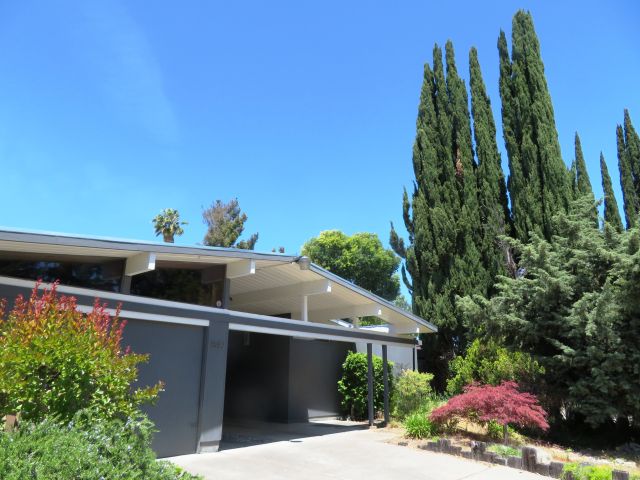 |
|
|
Still, some of the press about the Cupertino zoning change focused on how Eichlers in nearby towns were facing second-story threats, suggesting the Eichlers of Cupertino might benefit. And Steve Meier, a proponent of Eichler protection in Sunnyvale, cheered when he read the news from Cupertino.
“Yea for the Eichlers in Cupertino!” he wrote.
Why then, if the ordinance has been in place for more than a year, has no one from Fairgrove stepped forward to seek a single-story zoning overlay?
"Or has anyone?" we ask Erick Serrano, the planner who shepherded the zoning change through to completion.
“Not to my knowledge,” he says.
“There has not been much development in that neighborhood [recently],” he says. “And the [recent] remodels mostly keep things consistent with the existing structures. We have had some good architects working in that neighborhood.”
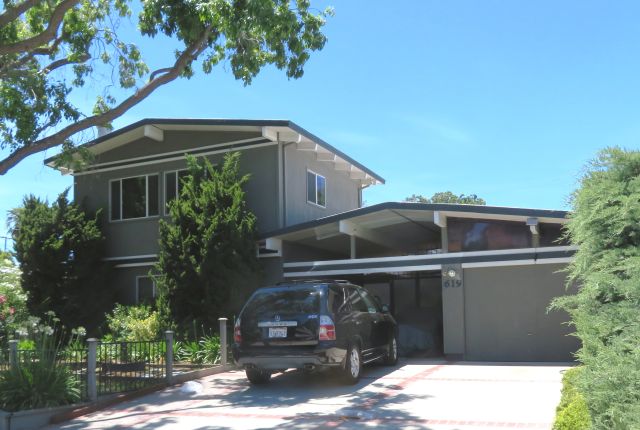 |
|
|
One reason no one seems to be pushing for a single-story overlay, says Katriina Laiha, is that apparently no one sees a looming menace.
Katriina and her husband, Sami Laine, have lived in Fairgrove since 2004 and in that time, they say, no one has built or proposed a second-story addition that they know about.
The tract does have some two-story additions, ranging from back-of-house discreet to low hip to as rambunctious as they get. But all were built many years ago. “People here love the architecture,” Katriina says, mentioning some extensive remodels that gutted the interiors but rebuilt them as Eichlers.
With recent remodels, she says, “Nobody has done anything ostentatious.”
“If somebody were to do a second story next door,” she says, “they would have a very harsh reaction.”
Sami adds, “There is always a risk that the neighborhood character could change. But no one that I know is active in seeking an overlay.” He says that the neighbors he knows are aware of the change to the zoning code.
But are folks in Fairgrove showing a bit too much complacency? It has happened in other neighborhoods that people organize to fight off second-story homes only after one of them gets built.
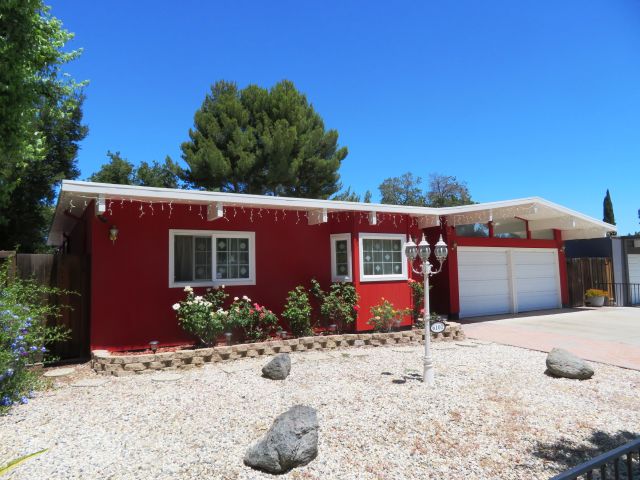 |
|
|
The tract, which has no active neighborhood association, is far from architecturally pristine. These are small Eichlers, and mix atrium models with courtyard models. Some homes, especially on the two busy streets that border the neighborhood, Bollinger Road and Tantau Avenue, are slightly shabby.
About ten of the 230 or so homes have second-story additions; several others have been capped with hip roofs, a couple tall enough to accommodate attics. Few homes have original garage doors. Some homes have been remodeled to suggest cozy cottages.
It’s possible proponents of an overlay would have trouble winning two-thirds support.
Cupertino did give the tract a degree of protection by calling it an 'Eichler District' and creating Eichler design guidelines back in 2001. The city worked with a group that called itself the Fairgrove Neighborhood Eichler Integrity Committee.
But, as the 2001 document states, those guidelines are not enforceable rules. “The guidelines are voluntary and are meant to guide and encourage residents towards successful improvement solutions while preserving the neighborhood’s unique assets.”
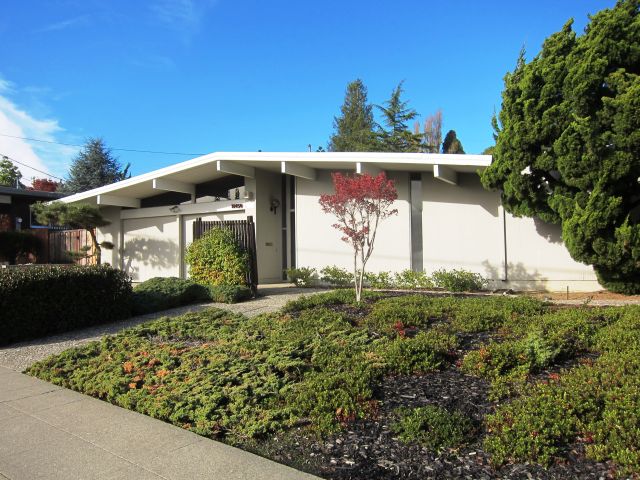 |
|
|
They also do not prevent second stories. “Nothing in these regulations is intended to preclude a harmonious two-story home or second-story addition,” the ordinance states.
Maybe the guidelines did help. In any case, most of the Eichlers in Fairgrove retain their looks. And Fairgrove is a great place to live, Sami and Katriina say.
“It is the perfect family neighborhood,” Sami says. “It was a great place to raise kids.”
He mentions the two schools that border the tract, an elementary and middle school, and the high school just a few minutes away. They walk to stores and restaurants, and appreciate the new Main Street Cupertino complex of shops, apartments, a hotel, restaurants, and more.
About Fairgrove, he says, “It’s a combination of the suburban dream and a walkable, urban neighborhood.”
- ‹ previous
- 40 of 677
- next ›



